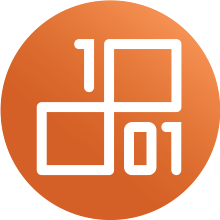Scope of functions
Based on the open source software Dataverse, DaRUS provides university groups with:
- Storage for research data and codes
- Management of own data
- Exchange within the research group or externally with selected partners or for publication
- Maintenance of own data universes with own search criteria and description options
- Easy citation of published data sets
- Productive system and test system available
DaRUS is a service of the Competence Center for Research Data Management (FoKUS). For further information regarding Terms of Use, data protection and administration, please visit the IZUS service page.
Frequently asked questions
The web interface of DaRUS can be found at https://darus.uni-stuttgart.de . As a non-registered user you will see all published datasets and data areas (Dataverses).
The DemoDaRUS test system can be found at https://demodarus.izus.uni-stuttgart.de/. The test system can only be accessed within the University of Stuttgart.
First, check if your institute already has its own data space (so-called dataverse) on DaRUS. You can find this out by searching for the name or the abbreviation of your institute in the full text search of DaRUS.On the page of your institute's dataverse you can reach the local administrator by clicking the Contact button. This person can then give you all necessary rights to upload data.
If your institute does not yet have its own dataverse, we can create such an area for you. The only requirement is that a local administrator takes responsibility for the dataverse (by taking on the role of "DaRUS administrator" in the university admin portal) and holds an introductory meeting with us. Contents of the introductory meeting are: Functions and configuration options of DaRUS, rights and duties as DaRUS admin, application goals, data types, formats and volumes, description categories, automation.
Login is done on the DaRUS homepage via Shibboleth. Click on LogIn in the top right corner and select "Universität Stuttgart" as Institution. You will then be redirected to a login page where you can login with your AC account. In addition to the published datasets and dataverses, you now also see all data and dataverses to which you have rights.
In the DaRUS Knowledge Base on DaRUS you can find instructions for the first steps on DaRUS.
DaRUS enables you to make your data Findable, Accessible, Interoperable and Reusable (FAIR). All data uploaded on DaRUS gets an DOI as a persistent identifier, a license (CC-BY by default) and can be described with an extensive set of metadata, organized in metadata blocks. The metadata blocks on DaRUS allow for information on citation and general description, context (project, funding, relations to other datasets and information), the research process with the methods and tools used, the object of study with the variables and parameters captured, as well as technical information on the use and documentation of software and code. A minimal set of metadata (title, description, author, contact, subject) is technically enforced by the system. Further metadata can be configured by local administrators according to discipline specific requirements. The metadata blocks base on metadata standards like DDI, DataCite, EngMeta and CodeMeta. All metadata is indexed and can be used to find and filter datasets via search facets, full text and advanced search services.
All data published on DaRUS is findable via B2FIND, OpenAIRE and the Google Dataset Search. All metadata is exposed in standard formats like DataCite, DublinCore and schema.org via an OAI-PMH interface.
The quality of published datasets is assured via a publication workflow. Before publication, each dataset undergoes a content-related and a formal quality check, in which it is checked for completeness, comprehensibility and reproducibility. Authors are encouraged to use open data formats.


